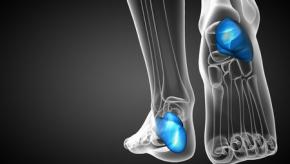Blogs
The Still’s Continua
The concept of a “Still’s disease continuum” that encompasses both sJIA and AOSD is based on the many common clinical, genetic and laboratory features shared by both sJIA and AOSD.
AOSD: complicated disease or a disease with complications?
Many clinicians may not have seen a case of AOSD during training, which overall leads to several delays in referrals and appropriate diagnosis for AOSD patients. AOSD is an autoinflammatory disease where innate immunity plays a primary role and is characterized by seemingly unprovoked inflammation, but without the high-titer autoantibodies or antigen specific T cells seen in autoimmune diseases.Myths & Misconceptions with Febrile Disorders
Still’s disease and autoinflammatory disorders are rare conditions unified by recurrent fevers and inflammation of skin, joints, and other organs. While labs often support the diagnosis, these conditions are best diagnosed by genetic testing, or by specific criteria (in the absence of a genetic test). The following is a table that lists common misconceptions (myths) and their clarifying explanations.2021 GRAPPA Recommendations - Looking Back, Looking Forward
With the recent publication of the third iteration of the GRAPPA Psoriatic Arthritis (PsA) treatment recommendations, it seems to be an auspicious time to reflect on some key considerations that arose during the development of the recommendations, as well as to look towards what the future may hold.ICYMI: Who is Your Glue?
I’ve often talked about the nurses in my clinic as being the glue, the clinic glue, my personal glue. Without them, the day and task would never go as well and just might crash and burn, if not for their steadying influence.Five Mistakes When Diagnosing Still’s Disease
Adult-onset Still's presents an interesting and diagnostic challenge when encountered. Here are 5 tips to improve your diagnostic acumen for this febrile disorder.
A Domain-Based Approach to the GRAPPA Psoriatic Arthritis Treatment Recommendations
With their publication in June 2022 (1), the 3rd iteration of the Group for Assessment of Psoriasis and Psoriatic Arthritis (GRAPPA) Treatment recommendations for Psoriatic Arthritis (PsA) may have set a record or sorts.















